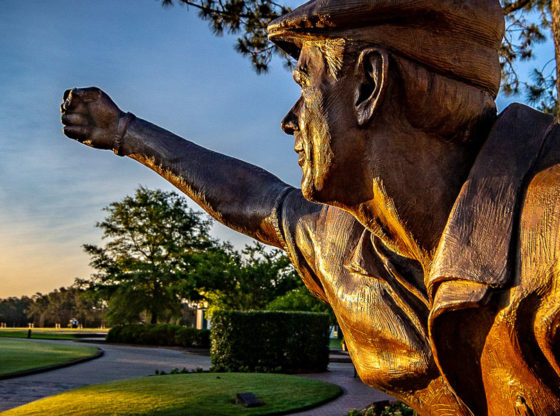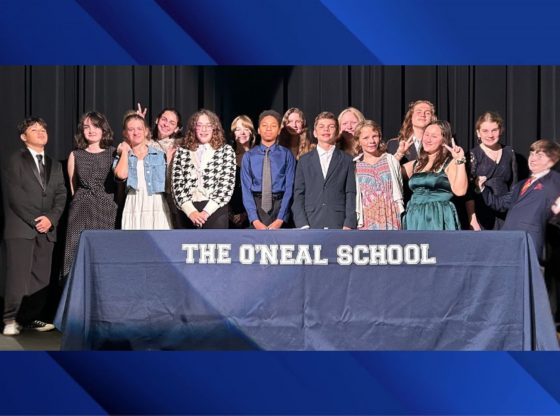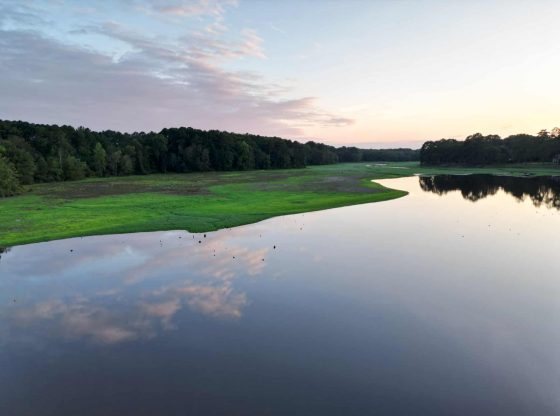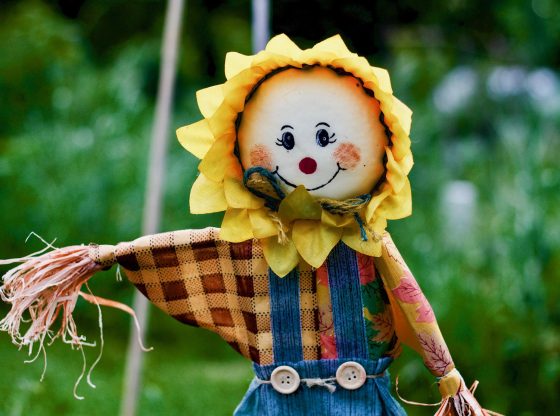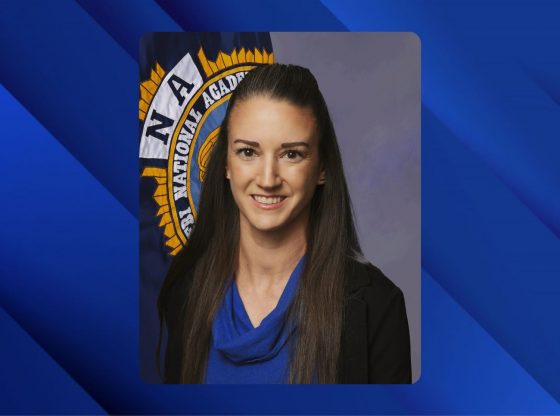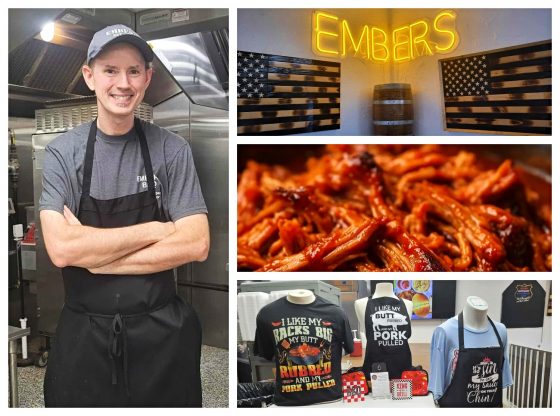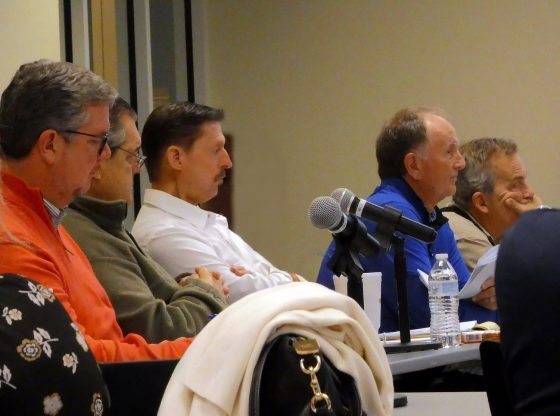It has been 20 years since Payne Stewart left this earth at the height of his career and with so much to look forward to, but his memory endures in Pinehurst.
Watching the best young golfers compete in the U.S. Amateur this past August, the thought occurred to me that a generation of golfers and their fans have grown up never having seen Payne Stewart play golf. They only know his graceful swing, distinctive outfits and brash attitude from YouTube videos or the occasional reference on the Golf Channel.
Yet, many will remember exactly where they were in 1999 on Father’s Day when his winning putt dropped in the hole at the 18th green of Pinehurst No. 2 on the last day of U.S. Open to seal his place in history. And, sadly the moment when they heard the news bulletin of his tragic death a short four months later at age 42. A life cut short in his prime leaving his wife Tracey of 18 years, daughter Chelsea, age 13 and son Aaron, age 10.
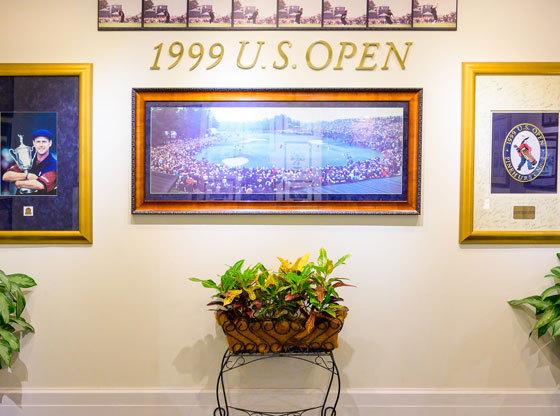
1999 U.S. Open Tribute Wall at Pinehurst Resort.
The son of an accomplished amateur golfer, Payne was recognizable to even the casual golf fan. He stood out wearing his trademark tam o’shanter cap, colorful knickers and argyle socks. Always nervously chewing gum. Always seemingly confident, even brash and cocky, although his mind understandably racing with emotions while on golf’s biggest stage.
Visitors to the Pinehurst Resort and Country Club will most certainly pass by the life-sized, bronze statue of Payne Stewart unveiled in 2001, forever preserving his memorable pose with his right fist extended, punching the sky and his left leg balancing him at the moment when his 15-foot par putt ended in the cup. So detailed is the sculpture, that a keen observer will note the WWJD (What Would Jesus Do) wrist bracelet, a gift from his son just a few months earlier, and the center-shafted SeeMore putter.
For a golfer, a trip to Pinehurst is never considered complete without a photo taken alongside the statue, posing as Payne did – fist punching the sky, one leg in the air – after his clutch putt on the green just steps away. Twitter is packed with photos of the pose, but only a lucky few can say they were there to witness that “One Moment in Time.”
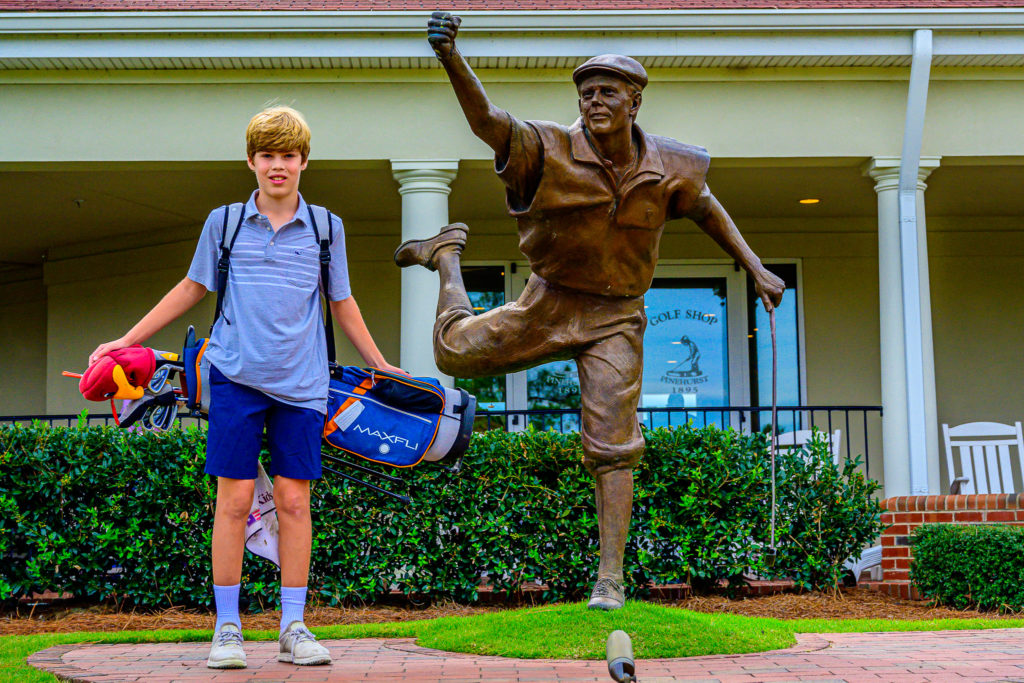
Jack Halloran, of Pinehurst, poses with the life-sized, bronze statue of Payne Stewart.
Cecil Monroe, Robbins, North Carolina native, member of the band Sketchbook and longtime caddie, remembers walking with the last group on that final Sunday. “Everyone talks about the putt on the 18th hole, obviously, but the most important putt he made that day was on 16, a downhill, double-breaker. That putt is hard to read.”
After making birdie on the par-3 17th, Payne’s drive on 18 ended up in thick, right rough. The worst lie he had all week. He had to mussel an 8-iron out to 80 yards. The bells from the Village Chapel could be heard in the distance as he calmly surveyed his next shot, walking up to the hole then back down to his ball before hitting his approach shot to the center of the green as thousands of spectators lined the green next to the clubhouse and millions of golf fans saw it on TV.
“Nobody makes that putt,” Cecil thought as he watched from the edge of the green. “Most people read it too high.” Thoughts of Payne missing the putt, the last round ending in a tie, and an 18-hole Monday playoff were on everyone’s mind – expect Payne. “He was so focused that day. You could see it in his eyes.”
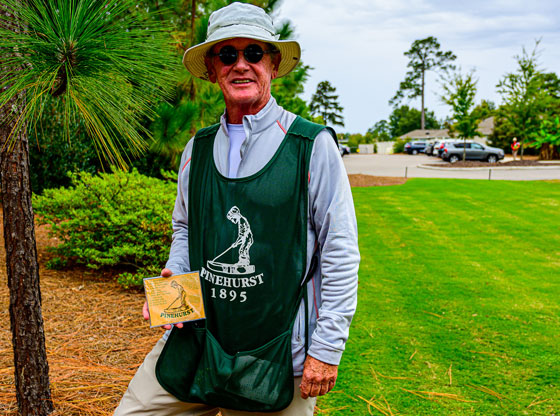
Cecil Monroe
That night, Cecil’s band played their instant hit, The U.S. Open Blues, into the early morning at Dugan’s Pub in the Village. So popular was their music, they became instant celebrities, asked to play for the likes of ESPN, The Golf Channel and Shania Twain. It was 10 p.m. that night that Payne made his way to Dugan’s and left a big bottle of champagne for the band.
On display at the Resort are pieces of history from that day. The rain jacket he wore that cool, misty day together with the scissors he used to cut the sleeves, making room for his golf swing and creating a golf apparel trend. Visitors can admire his tribute trophy case with the last round scorecard, a large 1999 U.S. Open golf bag, a photo of Payne holding the U. S. Open silver trophy, life-sized bronze bust, and an official USGA medallion given to the players.
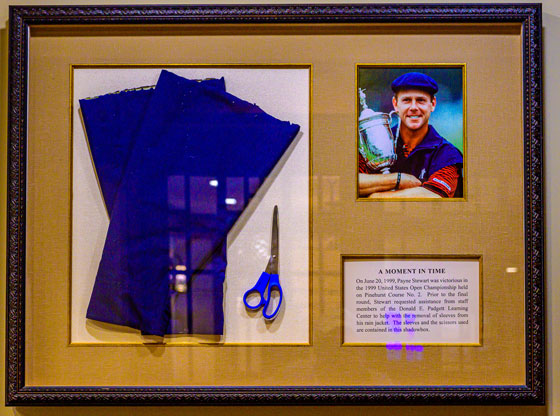
The rain jacket Stewart wore that cool, misty day together with the scissors he used to cut the sleeves, making room for his golf swing and creating a golf apparel trend displayed at Pinehurst Resort.
Those who wander over to Village of Pinehurst can find their way to the Old Sport & Gallery in the historic Harvard Building, where owner Tom Steward, a close friend of Payne, counts his personal photos of them together as priceless, among his magnificent, world-class collection of art, books and golf artifacts. And, no trip to the Village is complete without going to the near-by Pinecrest Inn and seeing his now-faded signature on the men’s room wall, carefully preserved behind a sheet of glass.
The Donald Ross designed Pinehurst No. 2 in the Sandhiils of North Carolina was unlike any course Payne, or the other 155 competitors in the field at the ’99 U.S. Open, had even played. The fairways were wider than typical for a major, but with greens that demanded precise approach shots and an imaginative short game. To Payne, helped by his caddie Mike Hicks from Durham and coach Dr. Dick Coop from Chapel Hill, it must have been comforting to walk the course in practice more than a week ahead with people on his team having local knowledge of this special place among the longleaf pine.
His death, along with five others, in a private jet on October 25, 1999, was traced to a faulty window seal in the aircraft that caused all the oxygen to suddenly leave the cabin, causing almost instant death to all on board. The plane then flew on autopilot for four hours before the engines ran out of fuel, crashing violently in a cornfield near Mina, South Dakota. A small stone monument engraved with the names of those who died and a Bible verse is the only thing that marks the location.
Helping to preserve his legacy, every year since 2000 an award is given to a deserving professional golfer in Payne’s name. The Payne Stewart Award is handed to a player whose “values align with the character, charity and sportsmanship that Stewart showed. This includes respect for the traditions of the game, commitment to uphold the game’s heritage of charitable support and professional and meticulous presentation of himself and the sport through his dress and conduct.” Past winners include some of the most admired golfers of our generation: Byron Nelson, Jack Nicklaus, Arnold Palmer, Ben Crenshaw, Nick Price, Tom Watson, Cary Player, Davis Love III, Tom Lehman and Ernie Els.
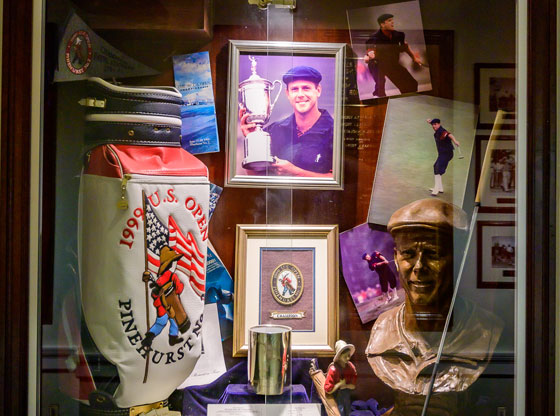
Payne Stewart’s tribute trophy case at Pinehurst Resort.
Pete Kowaiski, in his first year of a 20-year career with USGA in media relations back in 1999, remembered the last time he saw Payne. “After the communications staff ushered Payne through nearly three hours of interviews, photographs and autographs, we walked Payne out the door of the Pinehurst Members Clubhouse,” Pete said. “I fondly and vividly remember him holding a cold can of Budweiser in his hands as he departed and as he did he said matter-of-factly — “See you guys next year.”
Payne lived in-the-moment, a grinder on the golf course and the life-of-the-party off. It was only when he met his soon-to-be wife, Tracey, while completing on the Asian Tour and started a family that he began to change. Tracey, an Australian native, was a big part of his success by keeping her husband grounded and motivated, even providing putting advice before his final round in Pinehurst.
In the last years of his life, he came to embrace religion, helped by his family and close friend, Paul Azinger, himself a winner in Pinehurst at the 1992 Tour Championship, a cancer survivor and Christian.
A few days after his death, it fell to Azinger to deliver a touching and emotional eulogy to a church filled with family, friends and colleagues. “Only God can change hearts,” Azinger said. Adding, “You have fought the good fight, You have finished the race, You have kept the faith”
The U.S. Open will return to Pinehurst in 2024, on the 25th anniversary of Payne’s win. Certainly, there will be tributes, ceremonies and testimonies to Payne. And those who lived that moment in 1999 will remember the life of a man taken far too soon.
 ~Article and photographs by Sandhills Sentinel Sports Reporter John Patota.
~Article and photographs by Sandhills Sentinel Sports Reporter John Patota.


